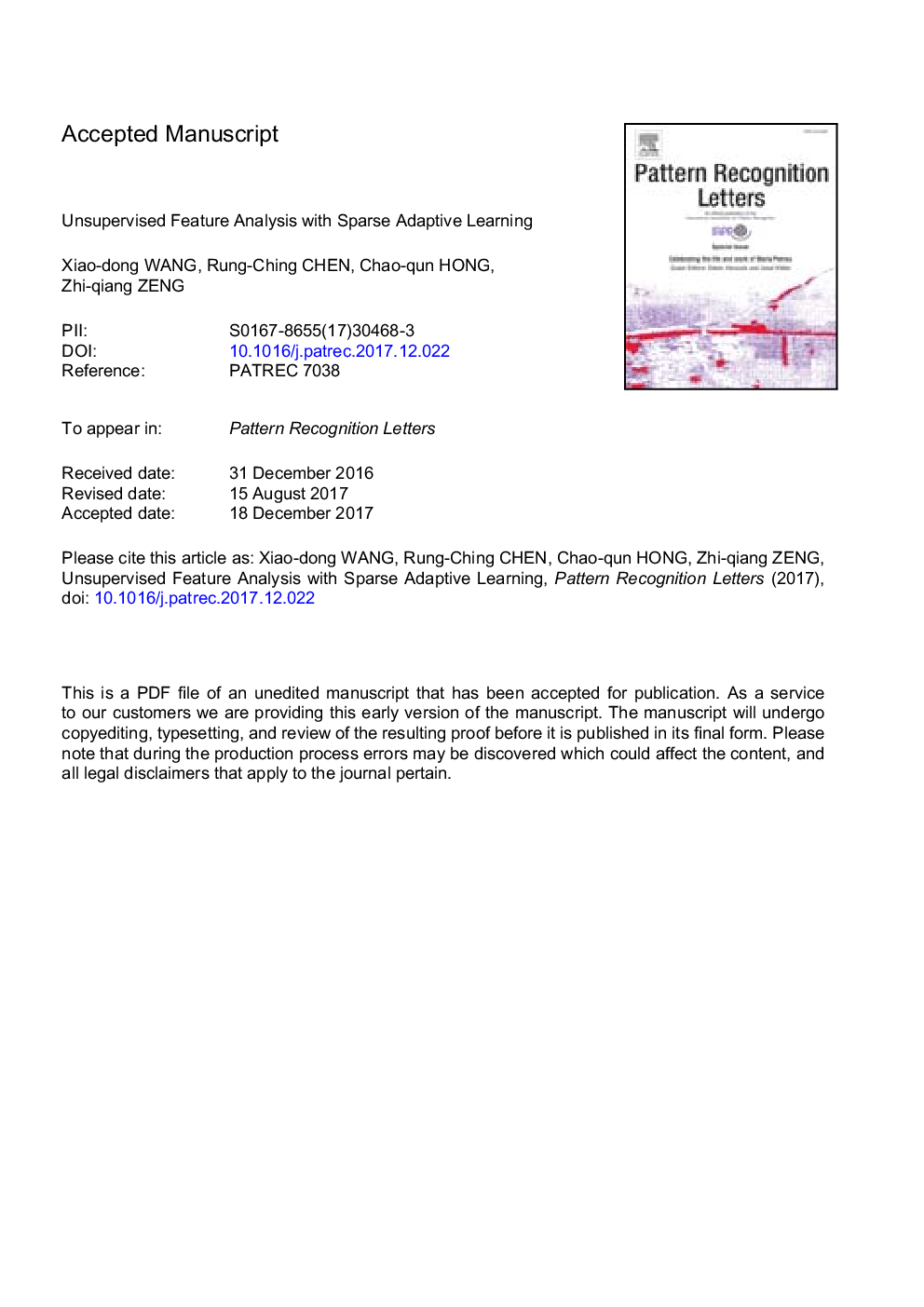| Article ID | Journal | Published Year | Pages | File Type |
|---|---|---|---|---|
| 6940718 | Pattern Recognition Letters | 2018 | 9 Pages |
Abstract
Unsupervised feature learning has played an important role in machine learning due to its ability to save human labor cost. Since the absence of labels in such scenario, a commonly used approach is to select features according to the similarity matrix derived from the original feature space. However, their similarity matrices suffer from noises and redundant features, with which are frequently confronted in high-dimensional data. In this paper, we propose a novel unsupervised feature selection algorithm. Compared with the previous works, there are mainly two merits of the proposed algorithm: (1) The similarity matrix is adaptively adjusted with a comprehensive strategy to fully utilize the information in the projected data and the original data. (2) To guarantee the clarity of the dramatically learned manifold structure, a non-squared l2-norm based sparsity method is imposed into the objective function. The proposed objective function involves several non-smooth constraints, making it difficult to solve. We also design an efficient iterative algorithm to optimize it. Experimental results demonstrate the effectiveness of our algorithm compared with the state-of-the-art algorithms on several kinds of publicly available datasets.
Related Topics
Physical Sciences and Engineering
Computer Science
Computer Vision and Pattern Recognition
Authors
Xiao-dong WANG, Rung-Ching CHEN, Chao-qun HONG, Zhi-qiang ZENG,
